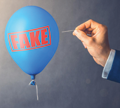Montenegro Amends Copyright Law
Montenegro's recent copyright law amendments, which entered into force on 24 October 2024, aim to harmonize local legislation with two key EU directives, the EU Directive 2019/789 and the EU Directive 2019/790, and represent a significant step toward enhancing copyright protection in the digital environment.
Text and Data Mining: Exception from Copyright Protection
“Text and data mining” generally refers to the computer-based analysis of large bodies of data to gain information and insights into the content being mined. This has become a prominent tool for processing and analyzing data in scientific and research fields and can generate significant value to the user in various commercial fields.
The amendments include new provisions related to text and data mining, allowing research organizations and cultural heritage institutions to reproduce protected work for scientific purposes without obtaining a copyright permission and without paying a fee. This exception also applies to individuals involved in text and data mining unless the copyright holder has expressly reserved all rights.
Additionally, a new software copyright exception in connection with text and data mining has been introduced, allowing anyone with lawful access to protected work to reproduce, translate, adapt, or modify software in part or in whole.
Online Content-Sharing Service Providers’ Obligations
Online content-sharing service providers are information society service providers who, for profit, store, give the public access to, organize, and promote a large amount of copyrighted works or other protected subject-matter uploaded by its users.
Under the amendments, online content-sharing service providers, such as social media or music-or movie-sharing platforms, must obtain authorization from rights holders before sharing or making the protected content available to the public. Content-sharing service providers will be considered liable for unauthorized content sharing unless the use of the copyright-protected work without paying a license fee is allowed for the purpose of caricature, parody and pastiche. This exception applies to both online and offline user-generated content shared on the online content-sharing service provider.
Press Publishers’ Rights
Press publishers now have the right to authorize or prohibit information society service providers, such as news aggregator websites or search engines, from making available online or reproducing the protected publishers’ work for two years following the publication. The press publisher’s right does not apply to the private or non-commercial use of press publications by individual users, hyperlinking, and the use of individual words or short extracts from press publications.
New Collective Licensing Mechanism
The collective licensing mechanism with an extended effect has been introduced, where the agreement between the collective management organization (CMO) and a service provider applies both to copyright owners who have authorized the CMO to represent them and the rights holders who have given no such authorization. In other words, CMOs can now represent rights holders who are not members of the relevant CMO and who have not expressly agreed to allow their works to be included in the CMO.
Right of Revocation
A revocation right can be exercised if copyrighted work is not adequately exploited, namely, the authors and performers have the right to revoke the license or the transfer of exclusive rights on the protected work, or terminate the exclusivity of the contract. The rationale for including this provision is that authors and performers should be allowed to seek other avenues for exploiting their work if a significant amount of time has lapsed without exploitation.
Retransmissions other than Cable
The Copyright Law already included a provision on the right to cable retransmission. An amendment now introduces retransmissions other than cable, the authorization for which may be granted or refused by the copyright holders.
The amendments also introduce transmission through “direct injection”. Direct injection is defined as a technical process in which the broadcasting organization transmits its program-carrying signals to a signal distributor in such a way that during the transmission the signals are not available to the public, and then the signal distributor communicates those signals subsequently to the public. Under the amendments, the broadcasting organization and the signal distributor participate in a single act of communication to the public in respect of which they must obtain authorization from rights holders, who have the exclusive right to allow or prohibit the use of their work necessary for the implementation of the direct injection.
Rights holders may exercise their right to grant or refuse the authorization for the retransmission and direct injection only through the collective management organization.












